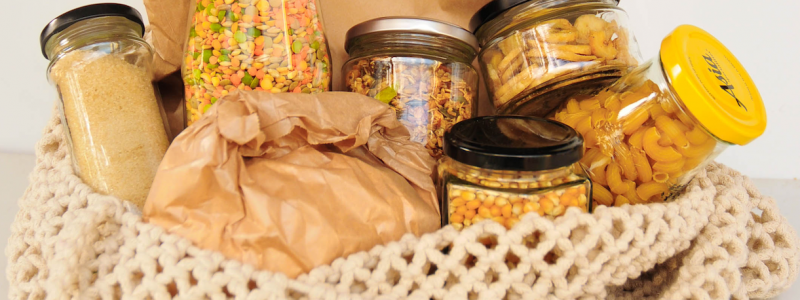Did you know that Australians throw away vast amounts of food every week? It’s estimated that the average household discards about $2,200 worth of food each year! We waste food for many reasons: we overestimate how much we need, serve more than our families can eat, and forget about leftovers tucked away in the fridge.
But there are easy and effective ways to reduce food waste at home. With a little planning and these food waste hacks, you can save money and cut down on waste. Here are eight practical food waste hacks to help you get started.
1. Clear Out Your Fridge, Freezer, and Pantry
If you haven’t done this in a while, challenge yourself to avoid grocery shopping until your storage is at least 1/4 empty. Why? When your fridge, freezer, or pantry is too full, it’s easy to lose track of what you already have, leading to unnecessary purchases and food waste. Use up what’s on hand before restocking.
2. Set Up a Compost System
Composting is one of the best ways to manage food waste. Keep a container in your kitchen to collect food scraps, even the forgotten, stinky items from the back of the fridge. Once full, transfer it to your outdoor compost bin or garden. By doing this, you’ll become more aware of what you’re wasting, and it’ll motivate you to make smarter choices about food storage and meal planning.
3. Understand ‘Best Before’ vs. ‘Use By’ Dates
Many foods, like pasta, rice, and spices, have a “Best Before” date, which means they’re still safe to eat after this date, although they might not be as fresh or flavorful. In contrast, “Use By” dates are crucial for safety. Once past the “Use By” date, it’s best to compost these items to avoid health risks.
4. Avoid ‘Specials’ Unless You’re Sure
Specials and discounts can be tempting, but unless you’re certain that you’ll use the item before it expires, it’s best to skip the deal. Overbuying often leads to food waste, so try to resist the temptation of stocking up on items that could end up in the bin.
5. Label Your Leftovers
Keep track of your leftovers by labeling them with the date and contents. Permanent markers wash off most containers, making it easy to reuse them. Knowing what’s in your fridge and how long it’s been there increases the likelihood that your leftovers will get eaten before they spoil.
6. Plan for Leftovers When Cooking
Think about how well your meal will store before you start cooking. Does it freeze well, or should it be eaten within a couple of days? If you’re expecting leftovers, portion your meal accordingly, and plan for how you’ll use or store them. Being proactive helps prevent food from being forgotten in the back of the fridge.
7. Practice Portion Control
Serve smaller portions and encourage family members to go back for seconds if they’re still hungry. Often, food left uneaten on plates goes straight into the bin. Reducing initial serving sizes is a simple way to avoid this kind of waste, especially when it comes to kids’ meals.
8. Shop Once a Week
Shopping once a week instead of daily helps reduce impulse purchases and food waste. Make a meal plan, create a shopping list, and stick to it. You’re less likely to overbuy or forget what’s already in your pantry. Planning ahead saves time, money, and prevents food waste.
The Benefits of Buying from Wasteless Pantry
By shopping at Wasteless Pantry, you’re supporting a sustainable, zero-waste lifestyle. Our bulk food options allow you to purchase exactly the amount you need, reducing packaging waste and minimizing food waste at home. From pantry staples to fresh ingredients, everything is available in bulk, so you don’t have to buy more than what you’ll use. Plus, buying in bulk is often more affordable, helping you save money while reducing your environmental footprint.
A little planning and implementing these food waste hacks in your shopping and cooking habits can have a significant impact on food waste reduction. Not only will you be saving money, but you’ll also be helping the environment by minimizing what ends up in landfills.
Weekly Menu Plan PDF

